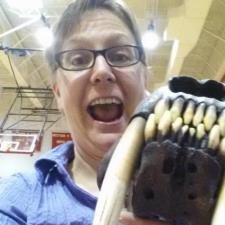
Penny H. answered • 12/02/19
Tutor
0
(0)
Geology - Biology - Chemistry - Paleontology
There are two options for what this could mean, depending on the context.
- There are two types of brachiopods (shelled animals that look superficially like clams - also called 'lampshells'): articulate brachiopods and inarticulate brachiopods. Inarticulate brachiopods appeared in the Cambrian and have remained relatively unchanged since. The modern brachiopod LIngula is one. All other brachiopods have hinged shells that fit together fairly tightly.
- This could be a reference to whether or not any bivalve (two-shelled) animal is preserved with its two shells together. This would be relevant to both brachiopods and bivalves (aka pelecypods - mollusks that include clams, mussels, oysters, and scallops). Articulate shells - that is shells preserved together - represent a different environment of deposition than one in which the two shells are separated.
In terms of a tsunamite, my guess is that this is in reference to the second idea. Perhaps a tsunami hits and buries the animals so rapidly that the shells are preserved articulated.




